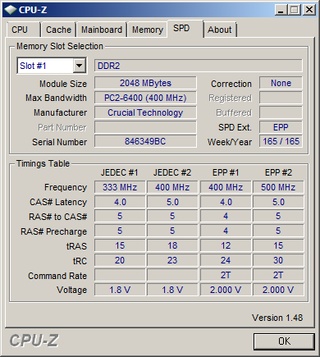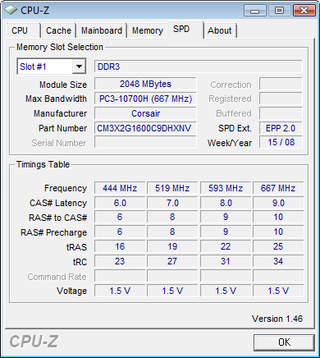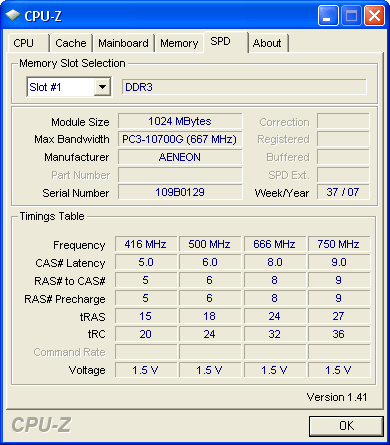Does High-Speed DDR3 Help AMD's FX? Four 8 GB Kits, Reviewed
Rumor has it that fast DDR3 memory kits help uncork the performance of AMD's Bulldozer architecture. We grab four of the latest kits sporting data rates as high as 2800 MT/s with the goal of finding out. One contender rises to the top in this round-up.
Does AMD-Optimized Memory Still Exist?
AMD has enjoyed the performance benefits of an integrated memory controller for more than twice as long as Intel. And yet, it seems that Intel sets today's standard for acceptability. When Core i7 (the Bloomfield version) launched with 1.65 V as its recommended maximum voltage, manufacturers divided their DDR3 DRAM across two product lines: higher-voltage AMD and lower-voltage Intel products.
Of course, appearances can deceive. When it comes to product development and (especially) marketing, this editor takes very little of what he sees at face value. Tom’s Hardware had already tested 1.50 V performance RAM many months before Intel’s original Core i7 launch, watched as manufacturers began making switching to smaller manufacturing processes (yielding less voltage-tolerant memory), and knew that DDR3 memory running at DDR2 voltage levels would soon be a thing of the past. Eventually, vendors with large inventories of older high-voltage ICs began marketing those sometimes-inferior products to enthusiasts with AMD CPUs because they could tolerate the abuse, all the while branding their new and improved products as Intel-optimized.
EPP, XMP, and AMD
Memory must be bootable at motherboard-default voltage levels, defined by JEDEC as 1.50 V for DDR3 modules, in order to assure compatibility across multiple platforms. A tiny flash ROM (called an SPD) on each module tells the motherboard how fast (or slow) the memory needs to be configured in order to run at JEDEC-defined voltage.
The use of higher-than-standard voltage levels to reach higher performance levels is overclocking. So, most of what we refer to as performance memory is actually rated for overclocked settings.

Many folks are simply too risk-adverse to start overclocking components manually. So, Corsair and Nvidia developed a method to do it semi-automatically. Released upon the world for all to play with, Enhanced Performance Profiles were memory configuration tables added to a slightly higher-capacity version of the SPD ROM. With this technology enabled, users could pick a complete memory overclock in BIOS. Since EPP was co-developed by former chipset manufacturer Nvidia, most of the motherboards that supported it had Nvidia chipsets.

But that was back in the days of DDR2. When Intel came out with a similar technology called eXtreme Memory Profiles for DDR3, the new technology was quickly added to user-configurable Intel-chipset motherboards. Corsair countered with EPP 2.0 for DDR3, but Intel’s dominance over its own platforms meant that the newer, lower-voltage Intel-oriented RAM shipped exclusively with XMP.
Stay on the Cutting Edge
Join the experts who read Tom's Hardware for the inside track on enthusiast PC tech news — and have for over 25 years. We'll send breaking news and in-depth reviews of CPUs, GPUs, AI, maker hardware and more straight to your inbox.

EPP 2.0 disappeared as supplies of the older high-voltage memory dwindled, and AMD-specific memory disappeared with it. All of today’s test modules have XMP profiles, and those profiles are displayed (but not selectable) in our motherboard’s firmware.
Current page: Does AMD-Optimized Memory Still Exist?
Prev Page Does Faster RAM Improve The Performance Of AMD FX CPUs? Next Page G.Skill Ripjaws X F3-17000CL9D-8GBXM-
Rockdpm Interesting!. Still would wait for Pile driver. But since i do have a Kingston 8GB kit and a Sabertooth 990FX... may just have to try it one dayReply -
jdwii Great article this proves a lot of rumors!Reply
People can finally stop saying how unfair it is to test Amd with slower ram when it supports higher speed ram even though higher speed ram cost more money. It would actually be unfair to Intel its not their fault Amd needs higher speeds to compete(which it doesn't) with Intel's 1333 ram controller.
Ram speeds do how ever make a big difference on APU's. -
mayankleoboy1 would love to see the same review for Ivy Bridge processors with and without iGPU HD4000.Reply
and do include more tests in the review. -
Crashman sarinaideMore of the cheap stuff is my mantra.Yeh yeh, but I really can't complain about paying $70 for 8GB of DDR3-2133, especially when it overclocks like that.Reply -
Reynod AMD has enjoyed the performance benefits of an integrated memory controller for more than twice as long as Intel. And yet, it seems that Intel sets today's standard for acceptability.Reply
Replace the last word with "performance" crash.
Good article which gets answers a couple of questions people have been asking - well done !!
:) -
jaquith Thomas thanks for the review.Reply
First note:
*KHX2400C11D3K4/8GX - is a Quad Channel kit specifically designed for the X79 ; link http://www.kingston.com/us/company/press?pagename=n1111c&year=2011&prLanguage=english_emea
*WQ213UB4G vs WQ213UX16G (kit) - is ONE stick of RAM (not a matched kit) and its 'kit version' is Quad Channel kit specifically designed for the X79 ; link http://www.supertalent.com/datasheets/WQ213UX16G.pdf
After that it makes sense that those (2) "kits" (in one case 4 individual sticks) failed @ Rated, and I wasn't interested in researching the others. I've seen other more in-depth testing on the AMD FX-8150 indicating that overall there's a slight advantage for the DDR3-1866 kits on a most of the AMD FX processors. Though @ 4AM 'to me' I'll edit this post after a few cups of coffee.
The 'ideal' AMD kits have JEDEC 'SPD' @ Rated 'cloned' (XMP) encoding which is optimized for AMD and sometimes slightly different so you're not 'stuck' as you put it @ DDR3-1333. Those are the better KITS to test on the AMD FX lines. -
SteelCity1981 Ram sppeds on a Bulldozer CPU means little and this just proves that so it doesn't matter if you are using DDR3 1600 ram or buying high performance RAM that can overclock to DDR3 2800 your not really seeing hardly any improvement with Bulldozer by doing so.Reply -
RAM speed also has a HUGE impact in controlled cache environments:Reply
http://thessdreview.com/our-reviews/romex-fancycache-review-ssd-performance-at-13gbs-and-765000-iops-in-60-seconds-flat/
Even the best SSDs can barely muster 100,000 IOPs, yet even slow RAM can easily exceed 700,000 IOPs.
Bandwidth, throughput, and latency are equally insane. RAM puts SSDs to shame exponentially more than SSDs put hard drives to shame. Contrary to what many "enthusiasts" believe, RAM timings are virtually irrelevant. Frequency is by far, much more important.
Most Popular


